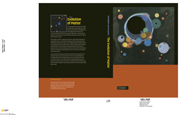Book contents
- Frontmatter
- Contents
- Introduction
- Part I The elements
- Part II Early solar system: nebula formation, evolution and lifetime
- 9 Introduction to the solar nebula
- 10 The primary solar system objects and related processes
- 11 Chondritic meteorites
- 12 Highly processed meteorites
- 13 A summary of early solar system chronology
- Part III Accretion of the Earth
- Part IV Global evolution of the Earth
- References
- Glossary
- Abbreviations
- Meteorites, rocks and minerals
- Index
9 - Introduction to the solar nebula
Published online by Cambridge University Press: 04 September 2009
- Frontmatter
- Contents
- Introduction
- Part I The elements
- Part II Early solar system: nebula formation, evolution and lifetime
- 9 Introduction to the solar nebula
- 10 The primary solar system objects and related processes
- 11 Chondritic meteorites
- 12 Highly processed meteorites
- 13 A summary of early solar system chronology
- Part III Accretion of the Earth
- Part IV Global evolution of the Earth
- References
- Glossary
- Abbreviations
- Meteorites, rocks and minerals
- Index
Summary
Now we narrow our view down to the solar system, which is a relatively young and small part of the Galaxy. For human beings, however, two objects of this system, the Sun and the Earth, are probably more important than all the vast outward Universe. Part II of the book describes the early solar system, focussing on the inner part of the solar circumstellar gas–dust disk (the solar nebula) where the terrestrial planets were formed (Fig. 9.1, also see Fig. 14.1). To form the planets, quite small particles, typically of the size of the grains constituting cold interstellar clouds (∼ 10−4 cm or less, Section 10.1), ultimately assembled into bodies of size ∼ 108 cm, a tremendous mass factor ∼ 1035. A long chain of complicated processes was involved in this growth. For the following simplified discussion, this chain is split into two time intervals: (1) dust accretion into planetesimals of the order of 106 cm in a gas-bearing nebula (this is considered in Part II) and (2) planetary accretion from planetesimals and planetary embryos (considered in Part III).
Most of the relevant processes are not observable and modelling appears to be the only way to study them. An exception is material from the accretion stage, which comes to Earth as meteorites and has helped a great deal to constrain the chemical evolution of the nebula and its time scale.
- Type
- Chapter
- Information
- The Evolution of MatterFrom the Big Bang to the Present Day, pp. 101 - 105Publisher: Cambridge University PressPrint publication year: 2008



